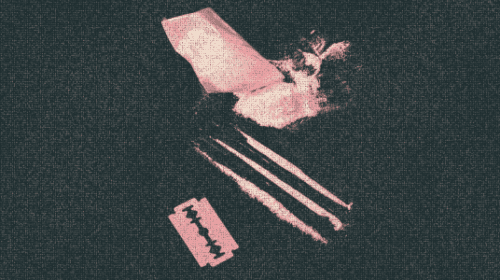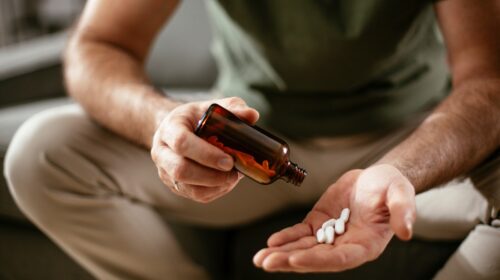The effects of Acid (LSD), aka an “acid trip,” typically last 6 to 12 hours. But they can last longer and result in serious side effects. It’s important to know the risks.
What is Acid (LSD)?
“Acid” is a common street name for LSD, which is Lysergic Acid Diethylamide. LSD is a synthetic (man-made) hallucinogenic drug.[1]Besides “acid,” other common street names for LSD include Dots, Window Pane, and Mellow Yellow.[2]
While it’s not currently approved by the FDA to treat any mental or physical conditions, LSD is known to have been used experimentally, often combined with therapy, to treat conditions such as:[3]
- Compulsive disorders
- Depression, especially in those suffering from terminal illness
- Phobias
- Neurosis
- Obsessive conditions
- Post-traumatic stress disorder (PTSD)
- Schizophrenia
- Sexual deviation
- Substance use disorders, especially alcohol dependency
- Borderline and other personality disorders
Currently, researchers are looking at how LSD may help treat cluster headaches, migraines, Alzheimer’s, and dementia.
How Long Does Acid Last?
In most cases, the effects of Acid (LSD) last 6 to 12 hours.[3] But they can last much longer, and in some cases, the effects are permanent. Because of how the drug affects your brain’s serotonin receptors, it has the potential to make long-lasting changes in your perception and thinking.
5 Phases Of An Acid Trip
| PHASE | TYPICAL DURATION & EFFECTS |
| Initial onset | .5 to 2 HOURS Timing depends on the dose, the form you take, and your individual metabolism |
| Come-up | 1 – 2 HOURSGradual intensifying changes in your mood, perception, energy, senses. |
| Peak | 4 – 6 HOURSThe most intense psychedelic effects, including hallucinations and altered thought and sensory perceptions. |
| Plateau | 2 – 4 HOURSPsychedelic effects are still present but less intense. |
| Comedown and after-effects | SEVERAL HOURS TO A COUPLE OF DAYS Changes in visual perception, mood, mental stimulation, and energy may still be experienced. |
What Factors Control How Long The Effects Of Acid (Lsd) Last?
The Form
The form and potency of LSD can make a difference in how long the effects last. LSD is most often taken on blotter paper, as a liquid, or as a microdot, which is a small tablet or pellet. Depending on the potency, each has the potential to create onset in .5 to 2 hours and last for 6 to 12 hours.
Other substances
Using other substances at the same time as using LSD can extend, enhance, dampen, intensify, or alter its effects.
| Substance | Likely Effect When Taken Concurrently with LSD | Precautions |
| Antidepressants, including tricyclic antidepressants, monoamine oxidase inhibitors (MAOIs), and SSRIs (selective serotonin reuptake inhibitors). | May prolong the effects | May pose a health risk due to possible serious interactions |
| Stimulants, including cocaine and amphetamines | May intensify overall stimulation, energy, and euphoria | Increased stress on the cardiovascular system can increase heart rate and blood pressure |
| Depressants, including opioids, benzodiazepines and alcohol | May shorten the duration of the trip. Can counteract psychedelic and stimulating effects | Poses a risk of more impaired judgment and serious risk of decreased breathing rate and depth |
| Cannabis (marijuana) | Can intensify psychedelic effects, alter individual and sensory perception, and prolong the amount of time the trip lasts. | Can increase anxiety, paranoia, and cognitive dysfunction |
Your Personal Experiences and Your Environment
Your mindset and emotions, your environment, and your expectations can impact how long the effects of acid (LSD) last. Nearly all people who take LSD report that it alters their perception of time. So you may experience the time as much different from the actual time elapsed.
If you’re not in a positive, safe place, it may seem shorter or longer. If you’re deeply introspective during the trip, it may seem longer. If you’re distracted by talking with friends, music, or a movie, it may seem shorter.
How Does Acid Affect Your Body?
People who take acid (LSD) typically notice mental effects most of all, as well as emotional, visual, behavioral, and physical effects.[4] How it affects you is highly individualized.
Mental Effects of Acid (LSD)
Most people who take acid report significant, profound changes in their mental state while the drug is active in their system. The most common mental effects include:
- An artificial sense of euphoria and certainty
- Hallucinations
- Delusions
- An impaired, or distorted, ability to perceive time and depths
- An inability to correctly perceive your own body and that of others, movements, objects, sound, touch, and colors.
- Intense fears of death, loss of control, or other thoughts
- Intense anxiety and/or panic attacks
Emotional Effects of Acid (LSD)
The emotional effects of Acid (LSD) vary widely from person to person.
Positive Emotional Effects
People who take acid (LSD) often report feeling more social and closer to other people, trusting others more, feeling more empathetic, and overall happiness.
Negative Emotional Effects
You’ve probably heard about someone having a “bad trip” on acid (LSD). This is usually a psychosis or experience of extreme paranoia, anxiety, panic, and fear.
You’re especially at risk for a bad trip if you take a high dose of LSD. It’s possible to switch from a blissful state to a bad trip quickly, and in some cases, the psychosis is difficult, if not impossible, to recover from.
Visual Effects
Many who take acid (LSD) experience changes in what and how they experience what they see. Colors can appear to be more intense or move, or the user may believe they can feel visual images and see sounds.
Behavioral Effects
LSD users may feel a greater desire to be with and connect with other people. They may also participate in risky behavior because the drug impairs judgment.
Physical Effects
As it stimulates the nervous system, LSD tends to produce:
- Dry mouth
- Dilated pupils
- Chills and or sweating
- Shakes and tremors
- Insomnia
- Changes in body temperature
- Low to no interest in food
In extreme cases, usually occurring with higher doses, these effects can lead to serious physical issues such as heart problems, increased blood pressure, hypothermia, and hyperglycemia.
How It Works
While researchers are not entirely in agreement as to how LSD works in the body, they believe it activates 5-HT2A serotonin receptors, interrupting the interaction between them and brain cells.[5] Plasma oxytocin levels may also be increased.
How Your Body Absorbs And Processes Acid (LSD)
Your body absorbs LSD into your bloodstream after you ingest it orally, and it passes through your stomach and small intestine. Your blood then carries it through your body and into your brain and your other tissues and organs. Your liver metabolizes LSD using the CYP2D6 enzyme. Eventually, your body eliminates LSD through urine. Most of the drug and metabolites created by the liver from it are gone within 24 to 48 hours. Small amounts may show up as detectable for a longer time.
The Half-Life Of Acid (LSD) In Your Body
The amount of time it takes for LSD to decrease in your body by half is called the “half-life.” The typical half-life for acid (LSD) is 2.5 to 4 hours. Note, however, that you may experience the effects of the drug for 6 to 12 hours or even longer. Peak effects usually happen at 2 to 4 hours after you take it.
Potential Risks of Acid (LSD)

Risky Behavior
- You may not make wise decisions.
- You may be more susceptible to the influence of others.
- You could unintentionally put yourself or others in harm’s way.
A “Bad Trip”
This could include extreme anxiety, paranoia, panic, and confusion.
Interference With Your Daily Life And Relationships
You may find that using Acid in an unsupervised environment makes you less able to concentrate, interact appropriately with others, or do everyday tasks.
Physical Risks
Because your senses are in a heightened state when you’re on Acid, it can:
- Make you fatigued
- Increase your heart rate
- Create tension in your muscles
- Dilate your pupils, which can result in damage to your eyes
- Decrease your appetite
- Interrupt your sleep pattern
- Mental risks
If you have a mental health condition such as psychosis, depression, or anxiety, using Acid may bring on a psychotic episode or trigger an extreme emotional reaction.
Mental Risks
If you have a mental health condition such as psychosis, depression, or anxiety, using Acid may bring on a psychotic episode or trigger an extreme emotional reaction.
Substance Use Disorder Treatment
Substance use disorder treatment includes Medical Detox to rid your body of harmful substances and, in more severe cases, Residential Treatment for focused recovery. After detox or inpatient care, a Partial Hospitalization (PHP) or Intensive Outpatient Program (IOP) would follow to continue support and maintain long-term sobriety.
Got More Questions About Acid (LSD) Use? Call Us.
Recovery Unplugged has answers to your questions and caring professionals standing by.

























